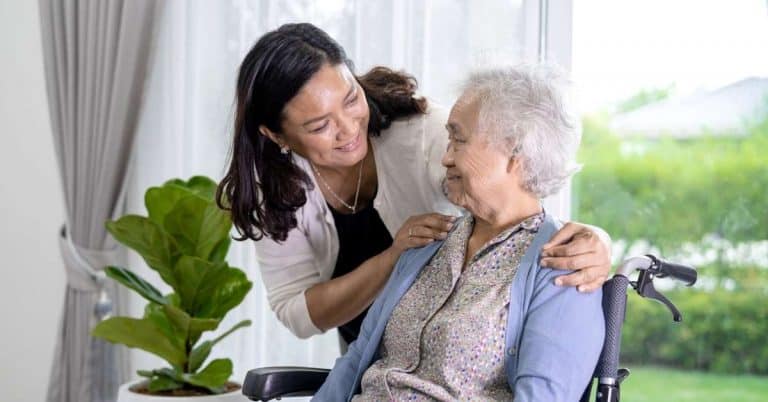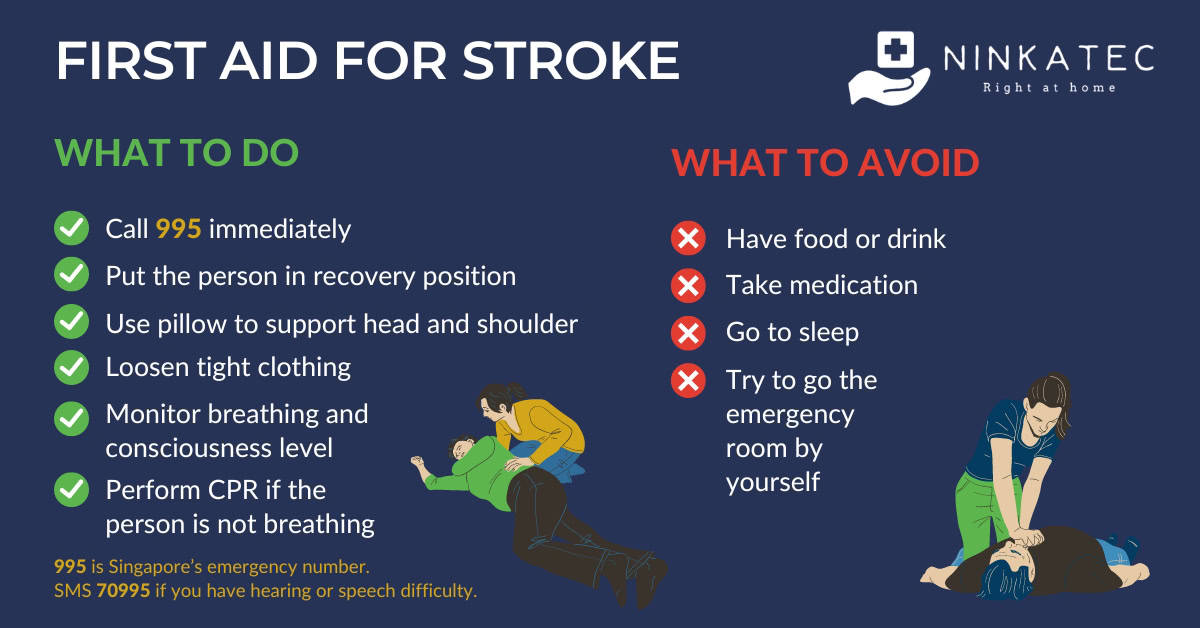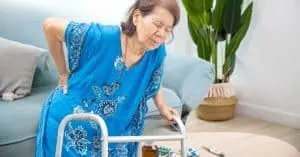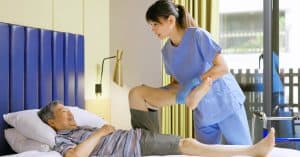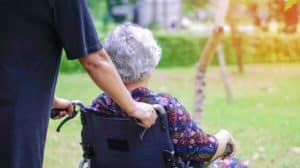Every hour, someone in Singapore suffers a stroke. In those critical moments, recognising the signs can mean the difference between life and death, disability and recovery. While many of us know strokes are serious, fewer are aware of how to spot one quickly.
In this guide, we explain how you can quickly identify stroke symptoms. We also discuss the long-term effects of stroke as well as the factors that influence the recovery rate among stroke survivors. Recognising the early signs of stroke is essential for facilitating immediate medical attention and preventing the devastating long-term damage of a stroke.
Table of Contents
1. What is a Stroke?
A stroke is a medical emergency where part of the brain is deprived of oxygen due to an unexpected blockage or burst in the brain's blood vessels. When this occurs, oxygen circulation is disrupted, leading to brain cell damages. Depending on the type of stroke, its severity, and how quickly treatment is received, a stroke can leave behind temporary or permanent functional impairments.
2. Types of Stroke
Stroke is classified into two major types – ischemic and hemorrhagic.
- Ischemic stroke - Caused by blood clotting that blocks blood flow in certain areas of the brain.
- Hemorrhagic stroke - Caused by an arterial rupture which produces internal bleeding within the brain or between the brain and skull.
While both types of stroke can lead to severe consequences, people with hemorrhagic stroke are more likely to suffer from permanent damage or develop severe disabilities. This is because the arterial rupture causes excessive pressure on the brain. In Singapore, approximately 80% of strokes are ischemic strokes, and 20% are hemorrhagic strokes, according to data from National Registry of Diseases Office.
Additionally, Transient Ischemic Attack (TIA) - a mild type of stroke - happens when there is a brief interruption of blood flow to the brain. This may cause temporary stroke-like symptoms but often does not lead to permanent long-term effects. As such, TIA is also known as ministroke, or silent stroke.
A ministroke can be an early warning sign of a major stroke. Unfortunately, most people affected are not aware of it, until they experience a more serious stroke or get a brain MRI for another reason and the scan shows brain damages linked to a stroke. In all cases, being aware of stroke symptoms and seeking immediate medical attention is the best way to minimise the severity and long-term impacts of any stroke.
3. Common Causes of Stroke
Existing cardiovascular disease, unhealthy lifestyle habits, old age, and other comorbid medical conditions are the more common causes of strokes. Cardiovascular disease, in particular, is closely linked to higher stroke incidence since they share similar risk factors. The common contributors to heart disease and stroke include:
- High blood cholesterol
- High blood pressure (hypertension)
- Diabetes
- Chronic stress
- Inadequate cardiovascular exercise
- Obesity
- Smoking
If you have one or more of the above risk factors, it is vital to discuss risk management measures with your doctor. They often involve making lifestyle changes and manage existing cardiovascular conditions if any. If you are unsure of your risk, a general health screening, or a heart health screening, can help you get a baseline of your cardiovascular health and risk level.
4. Symptoms: Early Signs of Stroke
Recognising the early signs of a stroke when it occurs is essential to preventing further brain damage. The acronym B.E. F.A.S.T. can help you assess and detect strokes more easily:
- Balance - Poor coordination, dizziness, and migraine-like symptoms are all potential signs of a stroke. Ask the person to walk a short distance. Pay attention to whether they lean more on one side of their body.
- Eyes - Check their periphery to find blind spots and ask if they are having difficulty seeing.
- Face - Ask the person to smile and check for facial asymmetry or drooping of one side of the face. If you are by yourself, smile in the mirror and check if the smile is uneven.
- Arms - Ask the person if they can feel both their arms to check for numbness. You may also ask the person to raise their arms or bring them forward and observe if there is difficulty doing so on one side. This can also be an easy way to self-check if no one is around.
- Speech - Ask them to repeat a phrase or sentence. Check for slurred speech or problems in speech comprehension.
- Time – Call 995 immediately when any of these symptoms are present. Treating strokes as soon as possible can reduce health risks and impairment.
The above warning signs and symptoms may manifest hours or even a few days before the impending attack. Do not delay seeking medical care if you notice the signs, even if you still feel like you are fine. There is no time to wait and see when it comes to a stroke.
Another important thing to remember is that not all 6 signs need to be present for someone to be having a stroke. In fact, one or two signs from the BEFAST method can indicate a possible stroke and should be taken seriously.
5. Why Time is Crucial During a Stroke?
Delayed medical support can leave stroke patients in worse condition and with more severe disabilities. An estimated 1.9 million brain cells die for every minute that a stroke is left untreated. Within the first hour, the brain drastically ages by 3.6 years, which can have detrimental effects for senior adults.
Additionally, patients are only eligible for certain treatment options like tissue plasminogen activator (tPA) within the first few hours of stroke onset. While medical specialists can use alternative procedures, responding quickly to stroke symptoms helps prevent further brain damage and medical complications.
The most important thing to do when you suspect a stroke has occured to yourself or someone by the B.E.F.A.S.T method described above is to call 995 for the Singapore Civil Defence Force (SCDF). While waiting for an ambulance to arrive, you can provide crucial assistance to the stroke victim. Remain calm and follow the following first aid steps:
- Call 995 immediately for emergency medical help.
- Help the person lie down on their side with their head supported (recovery position).
- Use a pillow or folded clothing to support their head and shoulders.
- Loosen any tight clothing to aid breathing.
- Monitor their breathing and consciousness level.
- If the person is not breathing, begin CPR if you are trained and confident in performing it.
- Do not give them anything to eat or drink, or medication to take.
- Reassure the person and keep them comfortable until emergency services arrive.
Remember, time is critical in stroke treatment. Even if symptoms seem to improve, it is essential to seek immediate medical attention.
6. The Long-Term Effects of Stroke
Patients and families should be aware of the long-term effects of stroke that may slow down recovery. You may experience:
- Impaired speech comprehension and/or ability
- Paralysis on one side of the body
- Limited mobility
- Cognitive impairment
- Changes in personality
- Higher risk of depression
- Poor memory retention
- Sensory deficits
- Visual problems
Fortunately, consistent rehabilitation and proper medical guidance can help stroke survivors improve their conditions over time. We discuss the 3 phases of stroke recovery and how to make the most of the first 6 months after a stroke, known as the subacute phase, for the best possible recovery outcome here.
7. The Recovery Rate of Stroke Patients
Individuals who have suffered from an ischemic stroke have a 31% survival rate and experience around 70% of full recovery within 3-6 months. On the other hand, hemorrhagic stroke survivors have a 24% survival rate and tend to have much slower recovery periods.
The risk of stroke increases with age, with 2 in 3 strokes occurring after the age of 65. Although ageing brains are still capable of self-repair after a stroke, elderly patients are more likely to develop disabilities. In addition to age, existing health conditions, stroke severity, as well as motivation and commitment to stroke recovery exercises play a role in an elderly patient’s potential for a full recovery.
We publish a series of resources designed to support families of new stroke survivors on their recovery journey. Learn more about the following topics:
- Post-Stroke Treatment and Care options
- Stroke Rehabilitation Techniques after the acute stage of stroke, i.e., after being discharged from hospital
- Home Care Guide for Stroke, for those who recover at home
- Common Challenges in Stroke Recovery and how to overcome them for the best recovery outcome
8. Recurrent Stroke Prevention
Preventing a second stroke is critical to survival and the quality of life for stroke patients. Research suggests that individuals are at higher risk of experiencing a second stroke within 3 months of the initial stroke. It is important to closely monitor ageing loved ones during this time since a recurrent stroke may lead to more severe brain damage and other medical complications.
In general, regular follow-up with your doctor, taking preventive medication as prescribed, and consistent rehabilitation play key parts in the post-stroke care plan.
9. Ninkatec’s Home Care Services for Stroke Patients
As one of the top home care companies in Singapore, Ninkatec provides quality and cost-effective home care services for stroke patients to recover conveniently at home, including:
- Nursing care for stroke patients at home
- Palliative care for stroke in the comfort of your home
- Physiotherapy, speech therapy and other rehabilitation therapies as required by stroke patients
Our goal is to raise awareness of stroke, help people affected by stroke recover effectively at home and relieve the care burden for their families by offering a personalised care plan most suited to their needs:
- Virtual Care - For 24/7 virtual support and remote monitoring of clients who experienced a mild stroke.
- Right at Home - For stroke patients who require minimal living assistance and only need monthly check-ups from a doctor.
- Close Connect - For patients who have suffered a severe stroke and need extensive living assistance with daily medical supervision.
10. Raise Awareness of Stroke and B.E.F.A.S.T Together
Recognising the earliest signs of a stroke is crucial in preventing severe brain damage. Time is of the essence when a stroke occurs, and it can happen at any moment during our daily lives. You might notice someone's smile suddenly drooping on one side or hear them complain about unexplained numbness in one arm or leg. By using the B.E.F.A.S.T. method, you can help a stroke victim receive immediate medical attention, significantly reducing the risk of long-lasting impairments.
Let's spread the word and B.E.F.A.S.T together to prevent the potentially devastating consequences of this disease. Your awareness today could be someone's lifeline tomorrow, including your own.
